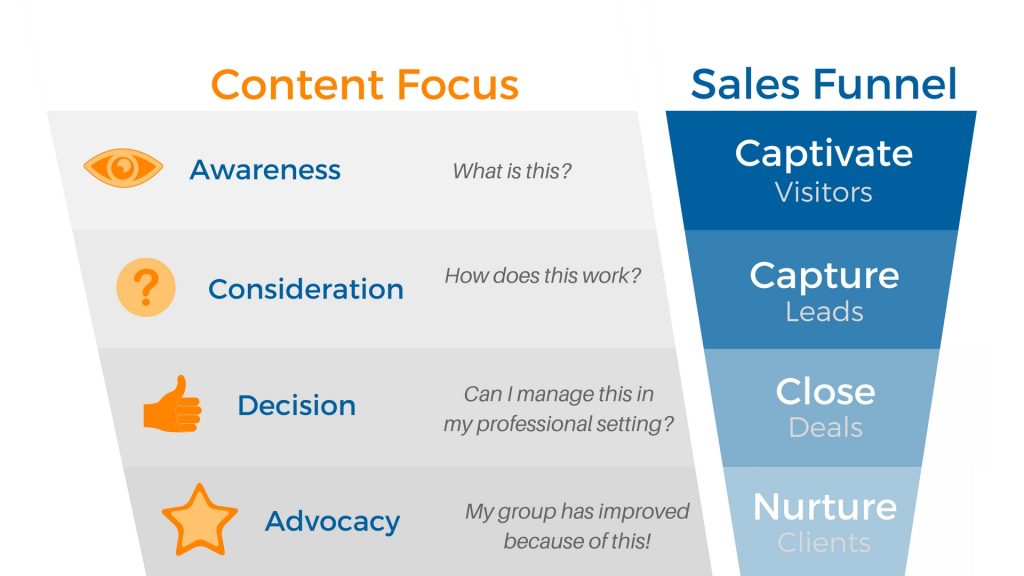
 We hear from the experts that it’s important to embrace content marketing and integrate it into the sales process, but how exactly? Where does content marketing fit in the traditional sales funnel?
We hear from the experts that it’s important to embrace content marketing and integrate it into the sales process, but how exactly? Where does content marketing fit in the traditional sales funnel?
To sharpen your sales funnel with content marketing, you need to evaluate the role content plays during each stage of the sales process. In this post, we unpack exactly how you can blend content marketing into your sales strategy. For example, let’s imagine we’re a company that sells a product related to gamification, the general concept of using video game-based programs as an educational tool at work or at school.
Captivate
The top of a successful sales process begins with cogent, meaningful content that creates awareness of your product or service, and draws prospects into the funnel.
Top-of-funnel content should be broad and provide basic information about your product or service. For our gamification example, describe its effectiveness as an engaging learning mechanism for students of all ages. Answer simple questions for prospects on a general fact-finding mission.
Capture
As a prospect enters the sales funnel, increase their knowledge level from awareness to consideration by describing how your product leads to meaningful results. Introduce its specific functions and benefits. Provide concise, easily-digestible product details. Content at this stage may comprise a one-pager of product details, a landing page or a short video.
Close
Once a prospect has a firm grasp of the product, and is considering a purchase, the focus turns to implementation. In the case of our gamification example, the prospect would want guidance on how to introduce it into their learning environment.
Lead your prospect through the sales process and answer their pressing questions. Share case studies and references to explain how your tried-and-true implementation process works with other customers. Be transparent – at this stage they want the full picture of how their purchase will translate to the classroom or the workplace.
Nurture
Closing the deal is not the end of the sales process. It’s the beginning of a long-term relationship with your new customer. A stellar nurturing process builds loyalty and can transform a buyer into a brand advocate.
Once new customers have successfully implemented your product and are happy with the results, encourage their ongoing involvement by inviting them to join your brand ambassador program. Request a testimonial, or perhaps create a case study around their success to use in future marketing campaigns and to supplement your content during the decision stage.
In summary: content marketing supports the sales process and helps demonstrate the value of your product. By creating content that mirrors this process, you can bridge the gap with your sales team and create a more comprehensive content strategy. Need help tackling your content marketing plan? Drop us a note at hello@cblohm.com.
If you enjoyed this CB&A education content marketing blog, check out these companion articles:
- Four Ways to Streamline Your Content Development Process: Content development is a vital part of any education marketing strategy.
- Turn Every Call to Action into a Lead-Generating Tool: Without an effective call to action, education content marketing efforts could go to waste.
- Let’s Get Visual: The Power of the Infographic: Any brand can harness the power of the infographic in education marketing efforts to yield high-impact results.
